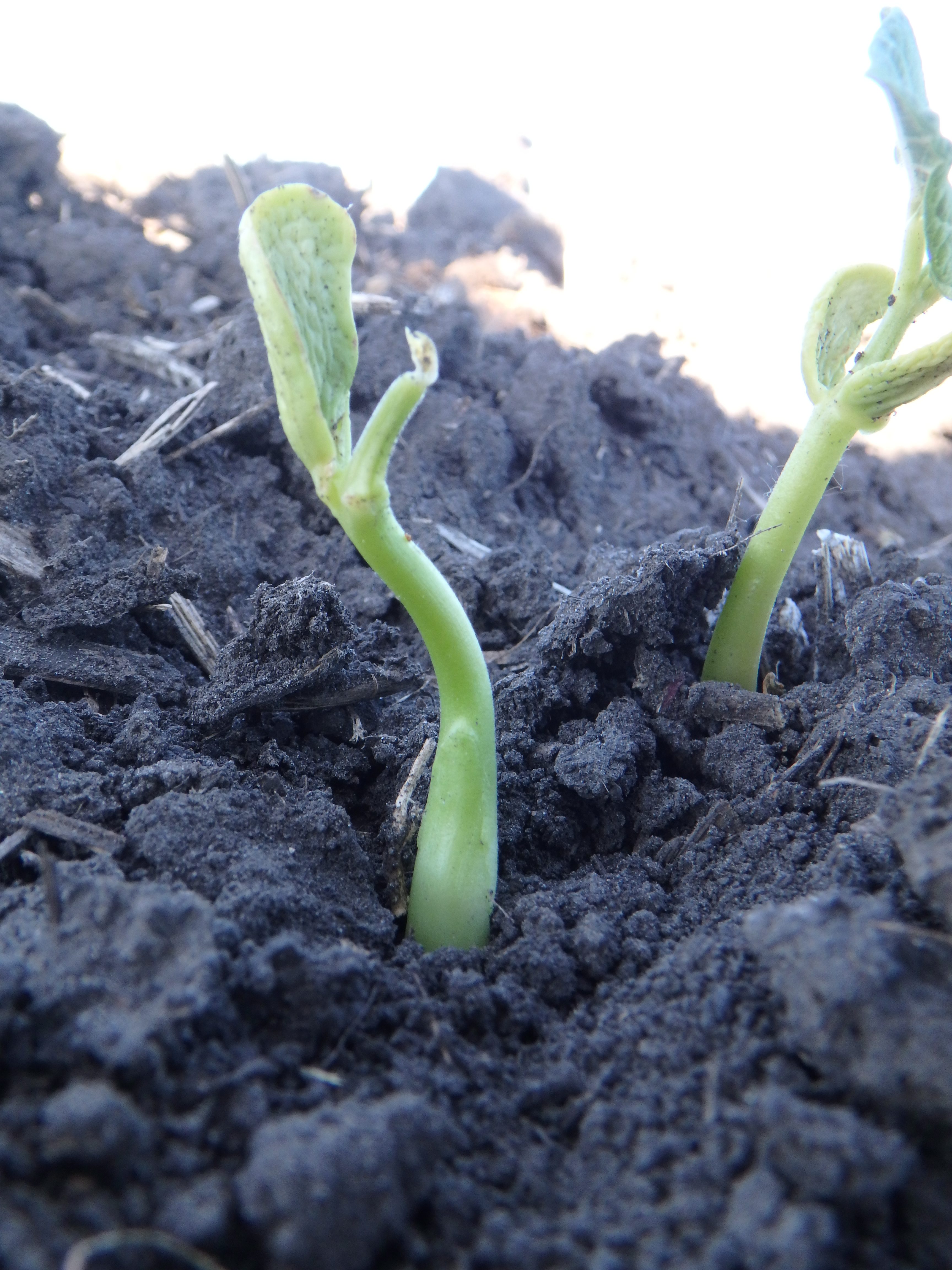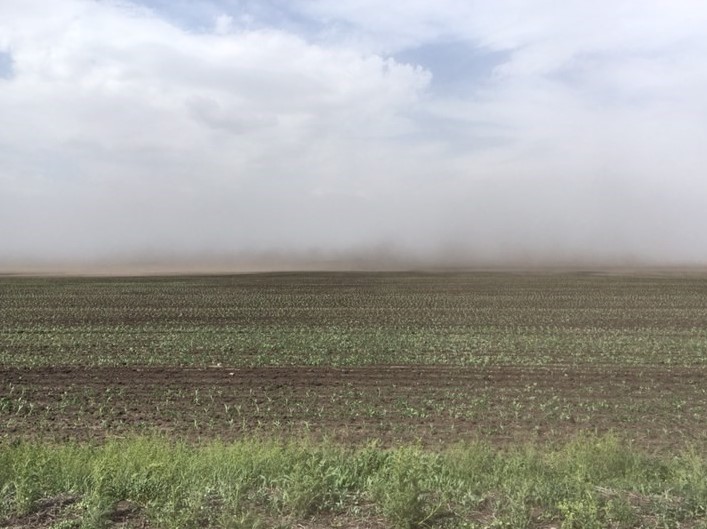June 13, 2019
Manitoba is currently facing its third dry season in a row, as 2019 is shaping up to be another dry year. However, there is potential for the moisture situation to turn around. In the meantime, it is important to assess certain factors associated with dry conditions to determine the impact on the crop and to aid future management decisions.
Tillage
Did you adjust your tillage and residue management practices in 2019 to conserve moisture? Research and recent observations this season have shown that reduced soil disturbance will improve soil moisture retention. However, it can be scary altering your practices, especially in clay soils. This season presents a good opportunity to assess the moisture status of your soils in relation to your tillage and residue management.
Scouting Tips:
- Assess the depth of soil moisture for each field. Investigate any differences you find. Is it related to more residue, undisturbed soil, spatial differences in precipitation received?
- Assess whether soil management has contributed to any plant stand establishment issues.
Emergence
Dry seedbed conditions have generally resulted in the decision to seed deeper. Deep seeding allows for seed contact with soil moisture but increases the risk of seedling stress. Deeper seeding also tends to delay emergence, especially under the cool spring conditions of 2019, making plants susceptible to early season disease and insects.
Scouting Tips:
- Check seed depth after emergence. Look for stressed seedlings with swollen hypocotyls, yellow cotyledons, broken cotyledons or damaged growing points. Also look for stranded or desiccated seeds lost to shallow seeding.
- Look for wilted, damaged or missing plants and lesions on plant tissue from early-season diseases or insects.
- Assess the range in crop staging and plant stand to determine the impact of hot, dry conditions, seed depth, residue management and pest pressure. Also assess the benefit of increased or decreased seeding rates under adverse conditions. Is it better to increase the seeding rate under these conditions to establish a stronger plant stand, or to lower the seeding rate to cut your losses.

Fertility
Safe rates of applied fertilizer depend on the crop species, the type of fertilizer, the rate, soil type and soil moisture. Due to the current dry conditions, pulse and soybean crops more susceptible to fertilizer burn. Seed or seedling burn can result in reduced stands or uneven emergence.
Scouting Tips:
- Look for symptoms of fertilizer burn on plants if fertilizer (especially P or K) is present in a “hot band” or is seed-placed. Symptoms may be present as dark grey or black-coloured seed or roots of damaged plants.
- Assess whether plant stand loss has occurred or whether crop growth is affected by fertilizer burn.
Is there a safe rate of in-furrow fertilizer for soybeans? Find out here in Field Crop News.
Inoculation and Nodulation
Inoculant efficacy can be decreased in dry conditions. Generally, granular products resist stressful conditions (dry, hot, etc.) better than peat-based powder or liquid formulations. Even granular formulations can fail if the conditions simply do not allow the bacteria to survive. What should you look for when you suspect inoculant or nodulation failure in your field?
Scouting Tips:
- Evaluate inoculant efficacy in all fields, but especially fields with single inoculation.
- Assess nodulation at the R1 stage in soybean, during the V6–V9 stages in peas and during the R1-R2 stages in dry beans, approximately 4-6 weeks after planting.
- Count the number of nodules per plant from at least five field locations to ensure there are at least 10 healthy nodules (pinkish-red appearance inside) per plant. Nodules that are green and brown inside are not functioning properly.
- Consider a rescue application of N at R2 (full flower) to R3 (early pod) in soybeans or during the 9–12th node stage in field peas if there are no nodules present and the crop looks yellowish-green.
Further reading:
- 20/20 Seed Labs Inc’s Pulse Crop Nodulation Guide
- SPG’s Inoculant Options for Pulse Crops
- Inoculation and Nodulation in Soybeans – Lessons from SoyLAB
Soil Salinity
Pulses and soybeans have low tolerance to salinity. They are negatively affected by saline field areas, more commonly in wet years. However, saline patches are typically more visible during dry conditions. Use the dry conditions this season to help you locate, measure and assess saline areas in your fields.
Scouting Tips:
- Scout all fields for saline areas indicated by a white crust on the soil surface and/or salinity-induced yellowing in the crop.
- Take note of locations and borders of saline areas for reference in wet years when the risk of salinity issues increases.
- Watch for the presence of kochia patches. High kochia populations are often found in high salinity areas.
Watch:
- Webinar: Effects of root zone salinity on crop growth and production – Ross McKenzie
- Video: Manitoba Agriculture’s Marla Riekman discussing compaction and salinity problems
Other Considerations
Herbicide Carryover
Risk of residual herbicide carryover is increased in dry years due to inadequate moisture for the breakdown of chemicals by microbial action. Products containing clopyralid (e.g., Prestige XC/XL, Curtail M, Cirpreme, Lontrel 360, Eclipse III) in rotations containing peas, soybeans, dry beans and faba beans require >175 mm of precipitation in the year of application for successful microbial breakdown.
If you suspect herbicide carryover damage in your crop, consult the re-cropping restrictions table here (pg. 77 in the Guide to Field Crop Protection), herbicide carryover considerations for 2019 here, field records, product labels and chemical representatives to help confirm damage from previously-applied chemicals.
Weed Control
Weeds like kochia that thrive in dry conditions can make weed control challenging enough in seasons like this. Unfortunately, many other challenges affect weed control in dry conditions:
- Weeds like lamb’s quarters and redroot pigweed develop a waxy cuticle under dry conditions,
- Kochia weeds become hairier, which can trap tiny droplets during herbicide application,
- Weeds may not be actively growing, preventing them from translocating chemical,
- Herbicide can evaporate and drift before reaching/entering the plant,
- Stomates may be closed preventing certain herbicides from entering the plant,
- Soil-active products may not have enough soil moisture for activation,
- Water quality may be poor in a dry year.
For more information on how to control weeds in dry conditions, click here for Manitoba Agriculture’s Weed Control Advice for Dry Conditions – Frequently Asked Questions.

